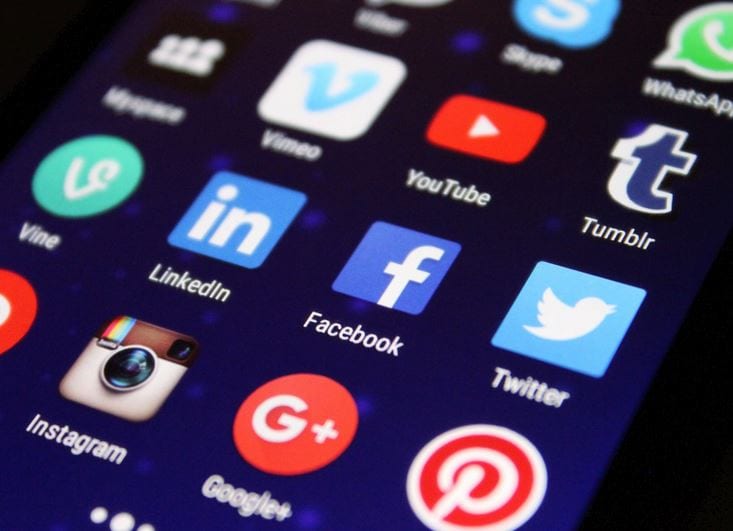This week, thousands of social media professionals gathered in New York City for Social Media Week to talk about what’s next in the world of social marketing and the challenges facing today’s marketers as they navigate an ever-changing social media landscape. According to Statista, 79 percent of the U.S. population uses social media. This provides marketers with an exciting opportunity to communicate directly with more people than ever before through a variety of channels they are actively engaged with. However, marketers also have the daunting task of keeping up with the flood of new content splashing across people’s news feeds and proving ROI as they experiment with new platforms and strategies.

Source: Pexels.com under CC license.
As you work to refine your social media strategy, these are three of the top trends coming out of the Social Media Week that you should pay close attention to.
You Can’t Fake Authenticity
Social media has no tolerance for brands that talk the talk without walking the walk. Real authenticity is crucial for generating quality engagements on branded content. Cindy Gallop, founder & CEO of MakeLoveNotPorn, Lydia Pang, creative director at Refinery29, and Patrice Woods Wildgoose, social media brand strategist at AARP touched on this topic during their panel at #SMWNYC, recommending that brands move past token inclusion to something more meaningful. For content to resonate, it needs to come from the right source. For example, baby boomers often struggle to effectively create content that resonates with millennials. It’s important to hire younger marketers who understand this audience and learn from them. If your brand wants to highlight diversity initiatives, success on social media will come from having a diverse bench at your actual company. Jumping on a theme or social issue without authentically supporting it will only leave your brand exposed and vulnerable to negative commentary. For brands that want to join a cause but don’t have in-depth background in that area, partnerships with market leaders or nonprofits that do is a great solution.
Lydia Pang put it best: “Companies [are realizing] you can’t just tag onto a conversation, show up on International Women’s Day, and put pink on something,” said Pang. “You can’t just have an epic 60 second TV ad and do nothing the next day. You need to do something meaningful.”
Social Media and Sales: A Dynamic Duo
Sales and marketing have a complicated history. In too many companies, the relationship between departments can be fragmented or inefficient. A recent study at Salesforce identified 52 percent of B2B social media marketers share their metrics with sales – but where does that information go from there? How can it best be used?
Beyond using social media to drive leads for sales (check out our ABM blog for more on that topic), it’s worth remembering that social media is the world’s largest test group. Social listening and engagement strategies can effectively tell brands what pain points customers and prospects are encountering in the marketplace – and the kind of solutions they’re seeking. Social can provide sales teams with the feedback they need to more effectively sell to prospects in a way that feels personalized. At #SMWNYC, Diana Helander, head of marketing and data enterprise solutions at Twitter, explored how it’s crucial to “capture customer touch points” to more effectively measure buyer’s priorities. She referenced a study that found that focusing in this area can lead to a 3-20 percent increase in revenue impact per transaction.
In the Age of Video
The evidence is all around us: video is the name of the game when it comes to compelling content. As social platforms continue to emphasize the value of video, brands are racing to keep up. No one can deny that video content drives the most engagement among social media users, but it’s costly and time-consuming to create. Just because demand for video is going up, doesn’t mean budgets are.
Some brands are tackling this challenge by incorporating more stock video clips into their strategy. Jon Finkelstein, executive creative director of PwC, explained that “taking something that is 80 percent there and personalizing the other 20 percent” allows his company to save money while personalizing content for different audience segments.
However, that’s another challenge brands are facing – not only is there a need for more video content, but that content needs to be personalized for each of the audiences a brand is targeting and then further optimized for each platform the content is going on. For example, think about the difference between user behavior on Facebook and Instagram. About 88 percent of Facebook users browse on their mobile devices and watch videos without sound. However, on YouTube your audience is most likely watching with audio on. This means that the Facebook video needs to have subtitles and should be significantly shorter than a YouTube video. This can quickly turn one video into eight videos, each optimized for a different platform and a different audience.
While it can be challenging to keep up to date with all the latest social media research, trends and solutions, it’s important to remember that with each new development there are new opportunities for marketers to incorporate their brands into consumers’ daily lives. If you’re ready to take your social media strategy to the next level, we’d love to talk!



